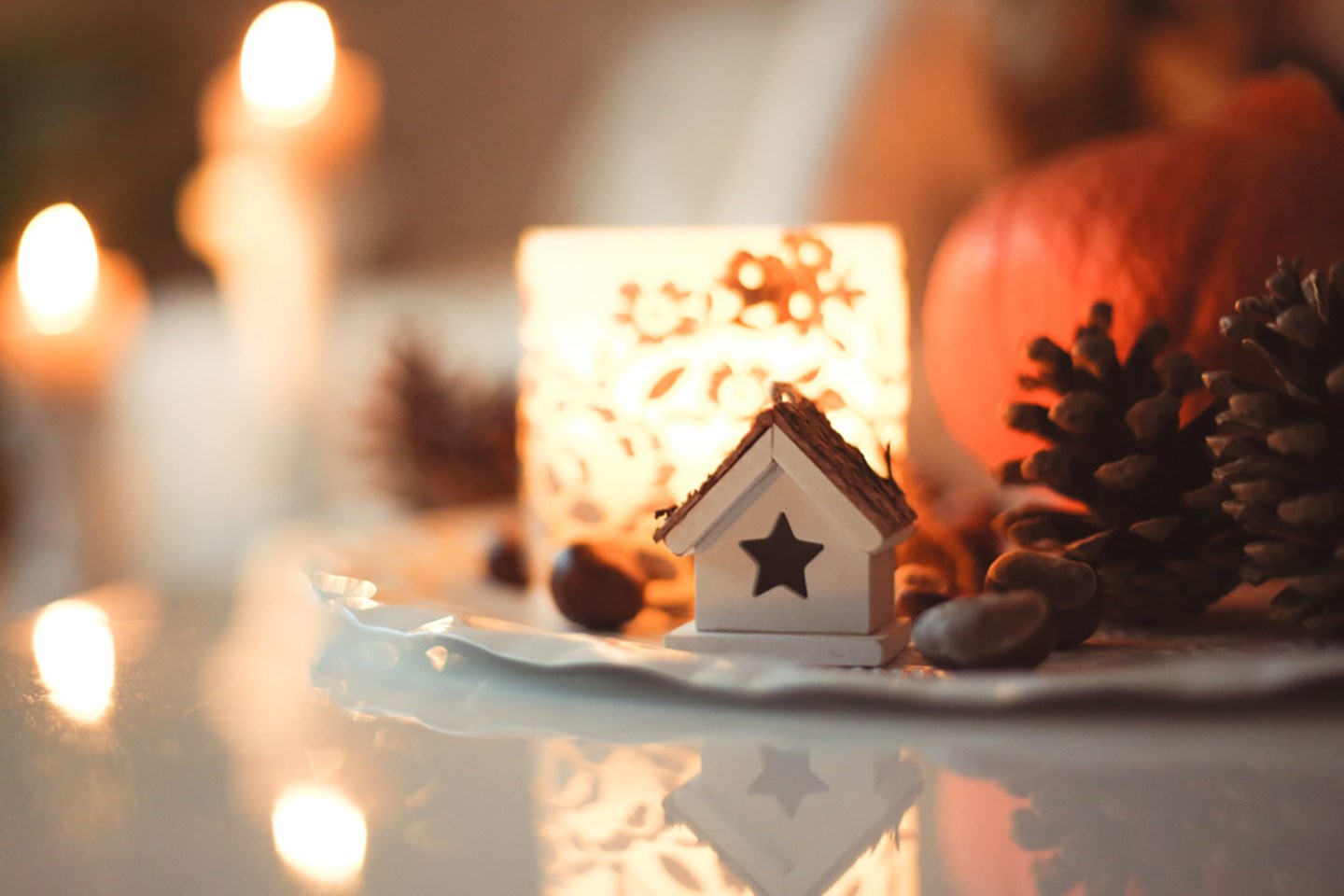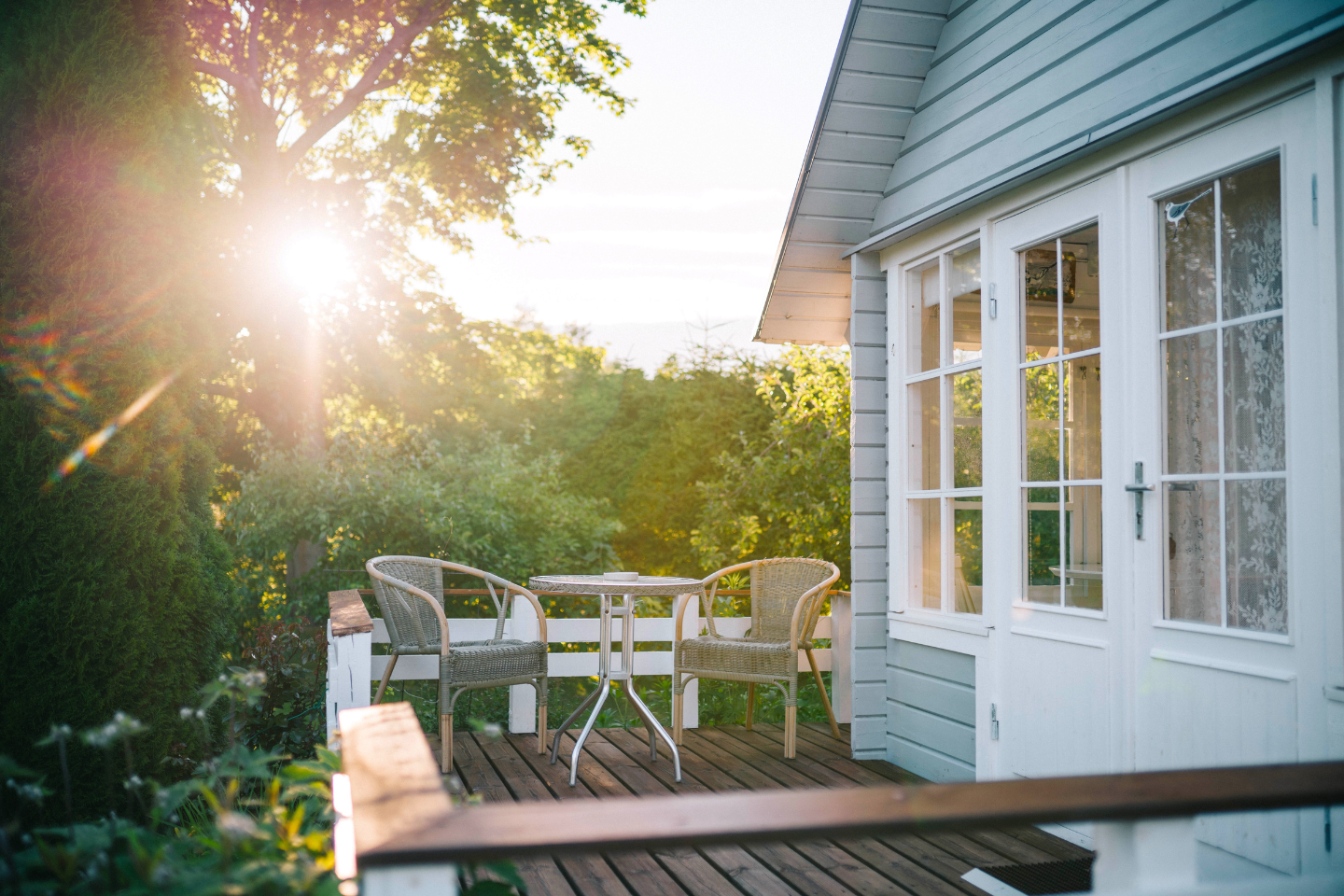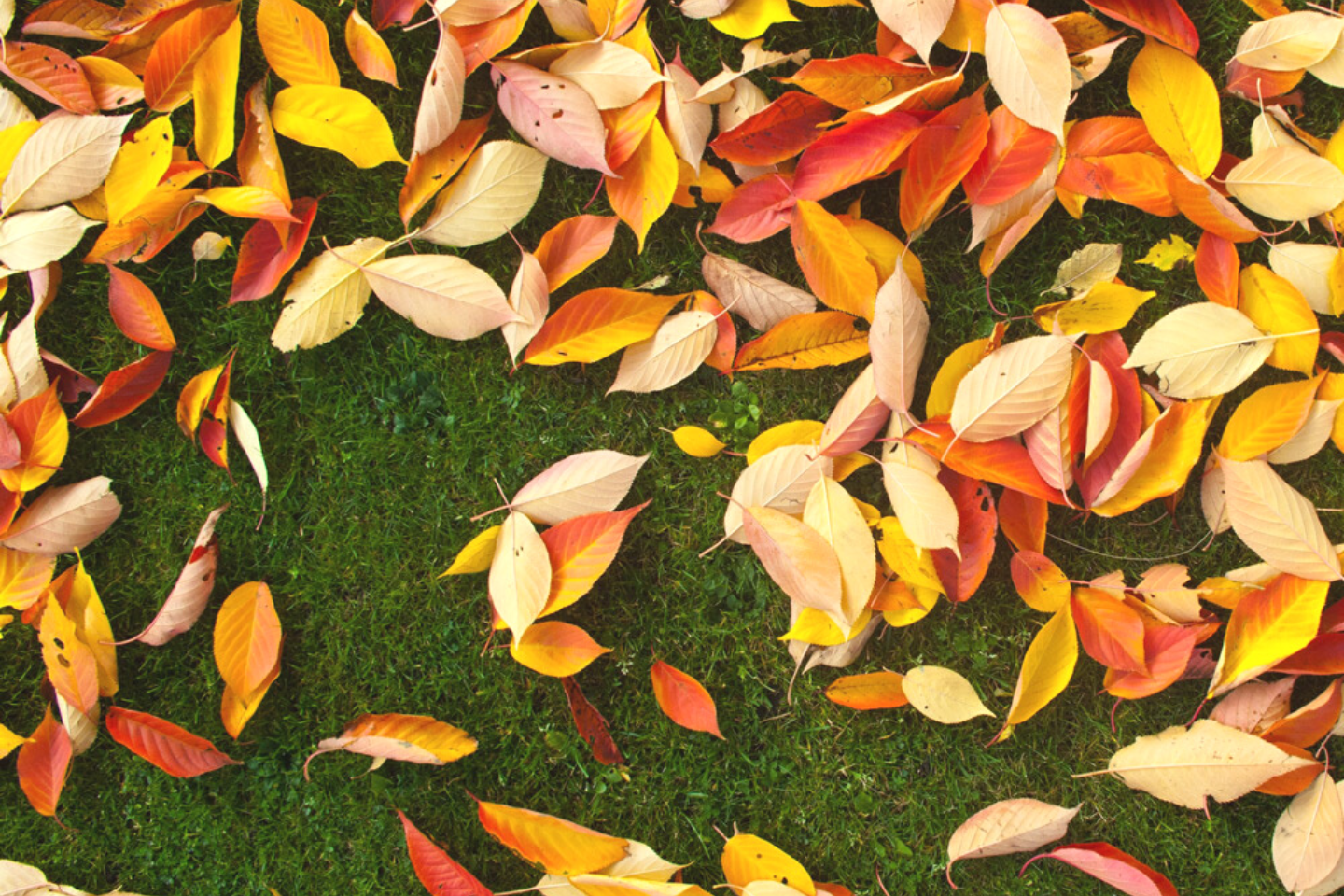
Category
Homecare
10 tips to winterize your home
Posted by AMH Team
9m read time
Nov 2, 2021
As temperatures begin to drop, it’s time to start ticking items off your fall home maintenance checklist. Putting in a bit of effort now can save you a lot of time, money, and headaches once it really gets cold. Even if you don’t live in an area that traditionally experiences much winter weather, it’s still smart to follow these tips. Irregular weather patterns in recent years have shown that one unexpected winter storm can cause a significant amount of damage.
Here are 10 simple ways to winterize your home. Many of them are easy steps you can complete on a Saturday afternoon without feeling like you’ve spent the entire weekend doing chores. And when you have that first night of severely low temperatures, you’ll thank yourself for preparing your home with just a small amount of effort.
Why winter house maintenance is important
Whether you rent or own your home, getting it ready for winter weather comes with several benefits.
- Save money on utility bills. A smart winterization routine keeps your home warm and your gas and electric bills down.
- Avoid damage to your home and property. Things like frozen pipes and fallen tree limbs can cause significant damage to your home as well as your personal property, like your car or belongings inside the house. This could result in costly insurance claims and even an increase in your annual premium.
- Keep pests out. Small animals and bugs are looking for a warm place to spend the winter as temperatures drop. Winterizing your home helps prevent them from nesting in your attic, basement, or other small areas.
Fall home maintenance checklist: 10 tips to get ready for winter
Ready to plan your weekend? Add these 10 steps to your to-do list so that your home is all set for winter.
#1: Schedule HVAC winter maintenance appointment
HVAC winter maintenance is one of the few tasks you need to outsource. Before you start cranking up the temperatures, schedule a routine check-up from an HVAC technician. The technician checks for wear and tear in your ventilation system and replaces any necessary parts.
Winter furnace maintenance is also included, which involves the technician cleaning the mechanical parts and ensuring everything is functioning properly. For individuals with gas heat, your furnace should be part of the check-up. Finally, the HVAC technician checks for carbon monoxide leaks to make sure your family stays safe all winter long while your heating unit is in heavy operation.
Bonus Tip: Schedule your HVAC maintenance appointment early. Technicians’ schedules can fill up quickly the colder it gets, as more people remember to service their heating systems.
#2: Reverse ceiling fan rotation
Ceiling fans aren’t just designed to keep you cool during the summer months. Setting them in the correct rotation also pushes warm air down, giving your heating system less work to ward off cold temperatures.
When you start using your heating system, switch your ceiling fan to the clockwise rotation. If you have a remote, there should be a button to push to change the direction. Otherwise, there should be a rotation switch on the ceiling fan itself.
Instead of keeping the blades on a fast cycle, slow down their rotation during the winter. This, paired with a clockwise direction, circulates warm air throughout the house and lowers your utility bills.
Bonus Tip: After you switch the rotation of your ceiling fans, try dropping your thermostat by a few degrees. You’re likely to feel just as warm without cranking up the temperature quite so high.

#3: Switch off exterior faucets
Here’s another easy winterization tip that takes just a few minutes to complete. Protect your pipes from freezing by switching off and draining your faucets on the exterior of your home. The first step is to identify the water shut off valve for your outdoor water supply. It should be near your water meter, probably in the garage, crawlspace, or basement.
Once you’ve found the correct valve, shut off the water until spring when overnight temperatures are regularly above freezing. Then turn on each outdoor faucet until the remaining water runs out. When all of the water is gone, simply turn the faucet back to the “off” position. Finally, empty and store any outdoor hoses to keep them in tip-top shape for next spring.
Bonus Tip: Head to your local hardware store and purchase an insulation cover for your faucets. It costs just a few dollars and protects the actual faucet from freezing and breaking as well.
#4: Seal air leaks
Taking care of air leaks offers the potential for significant savings on your heating bill. Energy Star est> that 25% to 40% of heating costs are due to air leakage throughout a home. Here’s how to close those gaps and save on your monthly bill:
- Check recessed lighting. Recessed lights are actually one of the leading causes of air leaks. Look at your lights to see if they’re labeled “ICAT” (insulation contact and air tight). If they’re not, invest in an airtight baffle for each light. Installation is easy and it keeps warm air from escaping through the attic.
- Fill gaps in the attic and basement. Use squirt foam to fill in gaps around plumbing pipes and vents. Opt for caulk when the gaps are less than a quarter-inch.
- Weatherstrip around windows and doors. On windows, weatherstripping can go around the window sashes. Use thicker foam tape around each side of the door jamb.
Bonus Tip: Place a door sweep under exterior doors for an easy fix.
#5: Prepare your water heater
Hot water is a must-have during winter. But it takes a lot for your water heater to keep up with the demands when outdoor temperatures are low. Draining the water tank once or twice a year gets sediment out and makes it easier to function. You can get a professional to come out and do this, or you can make it a weekend warrior project.
Start by turning off the water supply as well as the power and/or gas that’s attached to the hot water heater. Use a hose or bucket to drain the tank (make sure you have a spot outside the house where all the water will go). Also turn on all of the faucets inside and outside the house to drain the pipes. Once all the water is emptied, you can turn the water heater back on.
Bonus Tip: Turn down the temperature on your water heater by one or two degrees to save some money on utilities. You likely won’t even notice the difference.
#6: Clean your gutters
Once the show of fall foliage is over, it’s time to clean your gutters before it gets too cold. Leaving too much debris in there leads to excessive water that could eventually work its way into damaging your roof or foundation. Additionally, clogged water can freeze and cause cracks in your gutters. In extreme cases, frozen gutters could completely break and fall down, causing injury or damage to anyone or thing below.
All of these potential issues can result in expensive repairs further down the road. And insurance companies aren’t likely to cover a claim that was simply due to lack of maintenance.
Bonus Tip: Skip the heights by hiring a licensed contractor to clean your gutters for you.

#7: Trim your trees
For homes with trees in the yard, fall is the perfect time to do some pruning. This helps protect the house from overhanging limbs, but it also offers protection for people who might have poorly timed an outdoor walk.
Start by trimming any branches that hang over the house, walkways, powerlines, driveways, and parking areas. Depending on the size of the tree and the proximity to power lines, you may want to call in a professional tree service.
Next look for limbs that look weak or diseased. Getting these out of the way not only stops them from falling unexpectedly, it also allows for better air circulation and health for the tree.
Bonus Tip: Clean your pruning tools prior to cutting any limbs to avoid spreading disease between trees.
#8: Protect your grill
If you don’t have a place to store your grill for the winter, take some steps to keep it protected throughout the cold season. Start off by giving the entire grill a deep clean before you close it up. Then spray the grates with cooking oil to prevent rust. If you don’t plan to grill at all during the winter, wrap your burners with plastic to prevent pests from getting in. Finally, use a grill cover to lengthen the lifespan of the unit.
Bonus Tip: Disconnect the gas and remember to never keep gas tanks stored inside (including sheds or garages). For electric grills, remove the ignition battery so it doesn’t corrode.
#9: Schedule a roof inspection
Keeping your roof in top shape traps in heat and avoids unwanted water leaks from causing major damage.
Contact a professional roofer to identify signs of water leaks in the attic, check the flashing around your chimney to keep water from seeping in, apply sealant on features like plumbing or brick stacks as needed, and remove any debris that has piled up in corners or valleys of your roof.
Bonus Tip: Experts recommend getting a roof inspection every spring or fall and after major weather events.
#10: Add mulch to your garden
This final checklist item will contribute to a great bloom when you need it most in the early days of spring. When mulching, take care to do one final round of weeding before those unwanted plants go to seed and pull up any annuals that aren’t winter hardy. Then, spread out a thick layer of mulch, which protects bulbs and perennial plants from freezing temperatures over the winter. It also cuts down on the number of weeds that are able to pop up in the spring.
Bonus Tip: Many landscape professionals prefer fall mulching over spring mulching because it insulates the soil and any plant roots in the coldest regions.

Frequently asked questions
When should I start to winterize my home?
Most items on your winter home maintenance checklist should be done before freezing temperatures become the nightly norm. Prioritize the items that involve water, since the expansion of freezing water is what leads to burst pipes and other issues. Take care of oversized tree limbs as early as possible, since heavy winds and ice can quickly cause a lot of damage.
Should I leave the heating on in an empty house?
Whether you’re leaving the house for a long weekend or the entire winter, it’s important to keep the heat running while you’re gone. That doesn’t mean you need to set it to a toasty 75 degrees. Instead, drop the thermostat to about 55 degrees. This prevents major issues like pipes freezing but doesn’t cause your power bill to go through the roof.
How do I winterize my home on a budget?
Many of the items on the winterizing checklist fall squarely in the DIY category, even if you’re a beginner. Keep the budget low by putting in some elbow grease on the projects you can tackle yourself. Then spend money on services that require a license professional, like trimming high tree limbs, servicing the heating unit, and inspecting the roof. Spending a little money now can save you thousands of dollars later by preventing damage caused by winter weather.
The bottom line
Winter house maintenance is important to protect your family, your home and your belongings. Get started in the fall with easy DIY projects and make appointments for professional services sooner rather than later. Many contractors have a wait list, so it’s unlikely you’ll be able to get the job done by the next day. Once you have a smart winterization strategy in place, you can get cozy during those cold winter nights with the peace of mind that your home is protected as much as possible.
Note: If you're renting, please review the details of your lease, or contact your property management company before attempting any modifications or repairs to the property.
© 2024 American Homes 4 Rent, LP
All graphics, images, drawings, plans, photos, details, and videos, along with all artistic concepts and depictions in digital renderings and virtual tours and stagings, are for illustration purposes only. The actual appearance and features of the properties and communities may vary. Please verify all community and property details prior to signing a lease. American Homes 4 Rent®, AMH®, AH4R®, Let Yourself In®, AMH Development®, American Residential®, and 4Residents® are registered trademarks of American Homes 4 Rent, LP. 4Rent℠, AMH Living℠, and 4Communities℠ are service marks of American Homes 4 Rent, LP. AMH refers to one or more of American Homes 4 Rent, American Homes 4 Rent, L.P., and their subsidiaries and joint ventures. In certain states, we operate under AMH, AMH Living, or American Homes 4 Rent. Please see www.amh.com/dba to learn more.



